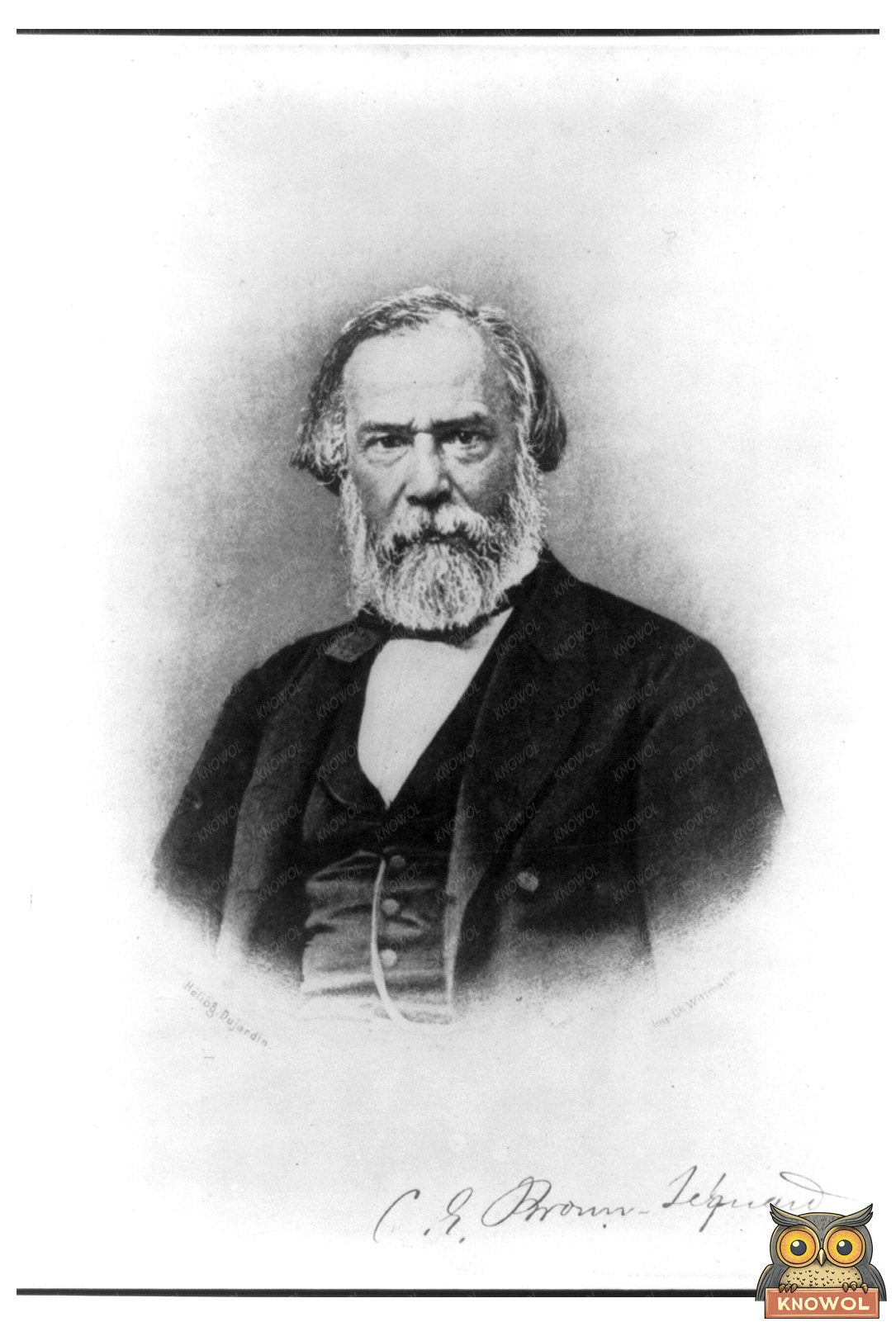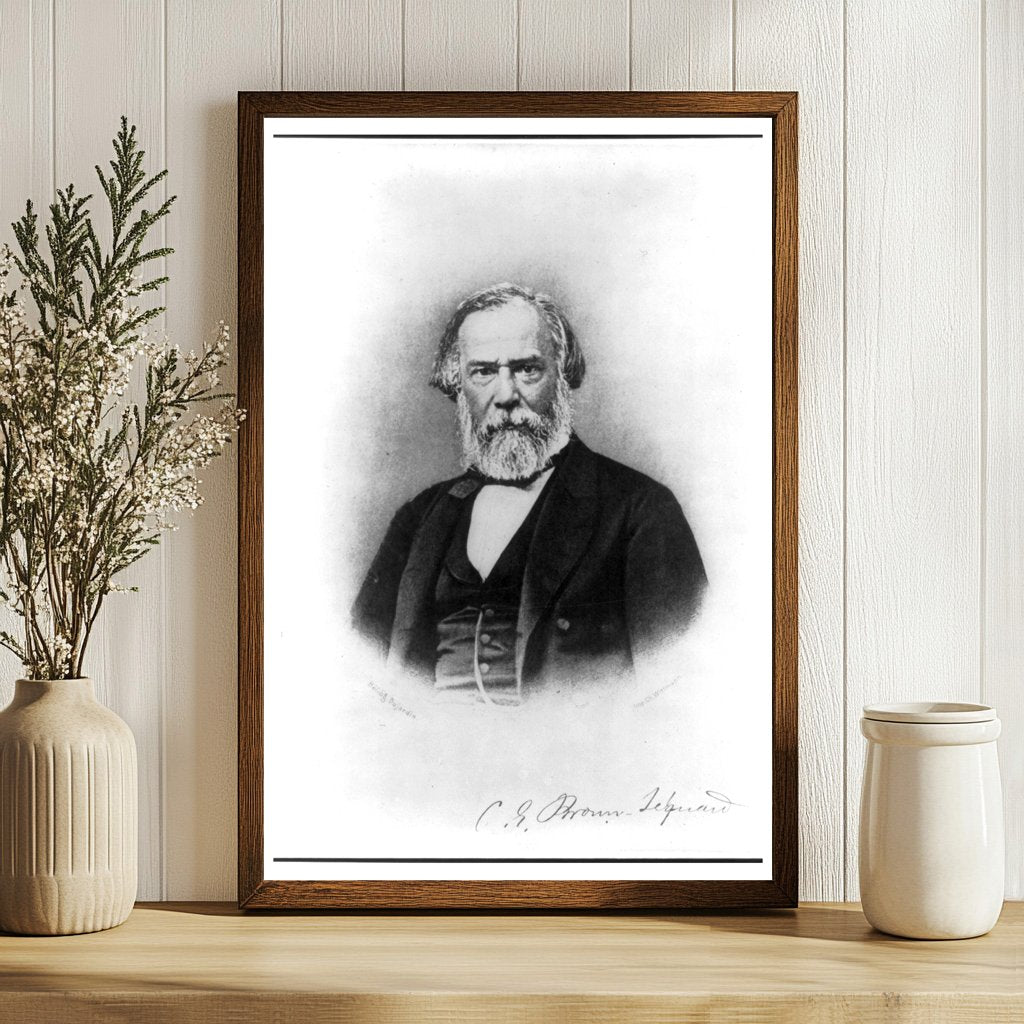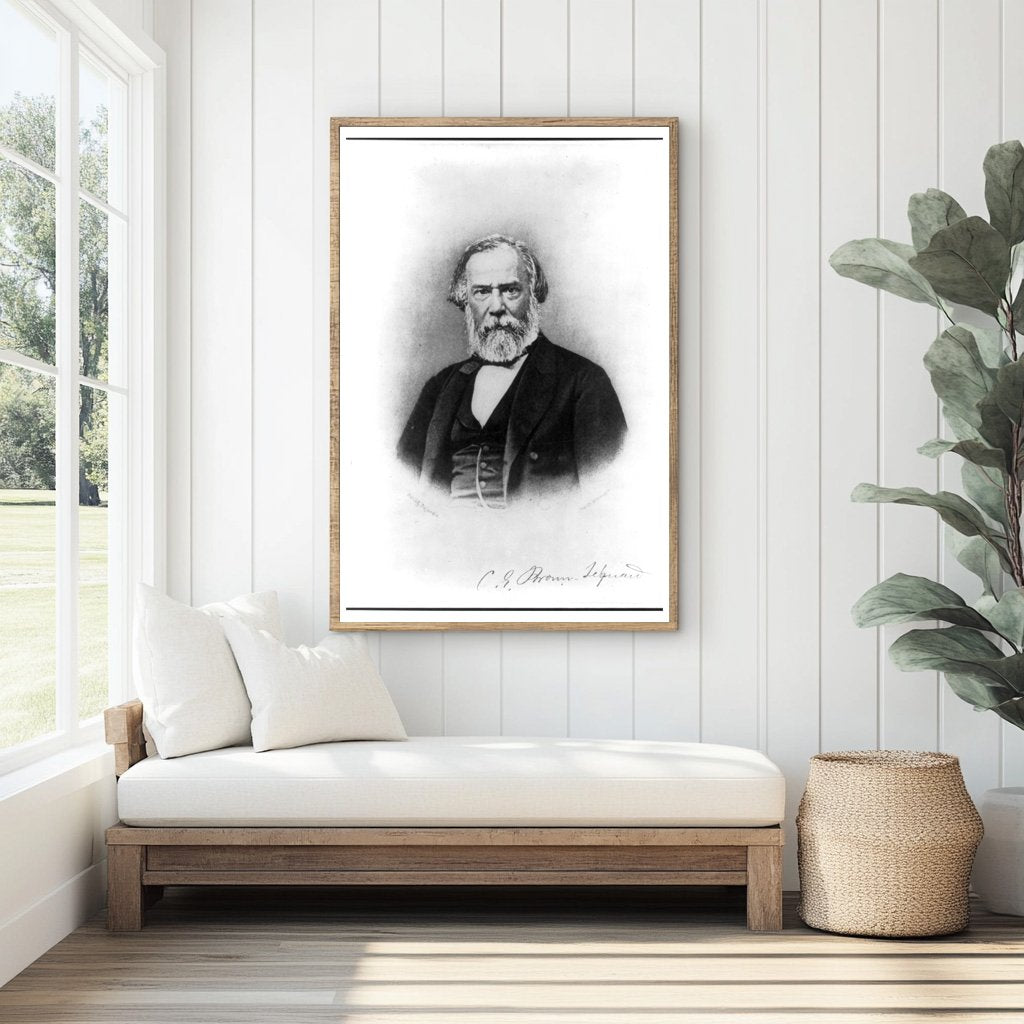


19th-Century Medical Pioneer Portrait: Brown-Sequard
Charles Edouard Brown-Sequard was a prominent figure in 19th-century medicine, known for his pioneering work in neurology and endocrinology. This head-and-shoulders portrait captures him in a moment that reflects the seriousness of his contributions to medical science. The print, created using the heliogravure technique, a method popular in the mid-1800s, showcases not only Brown-Sequards likeness but also the periods early approach to photographic reproduction.
Born in 1817 in Mauritius, Brown-Sequard’s career was marked by groundbreaking research, particularly regarding the nervous system and hormone functions. He is often credited with laying foundational work that would lead to significant advancements in the understanding of human biology and medicine. His studies on the effects of certain substances on the body directly influenced the development of hormone therapy. This portrait stands as a testament to his influence and the legacy he left behind in medical history.
The details surrounding the photograph, such as its production and preservation, help us appreciate early photographic methods and their role in documenting noteworthy individuals. As a heliogravure, this image also represents a point in time when photography was evolving into a respected form of documenting cultural and scientific progress. Brown-Sequards enduring impact on medicine is evident, making this image not just a portrait, but a valuable piece of historical documentation.

19th-Century Medical Pioneer Portrait: Brown-Sequard
